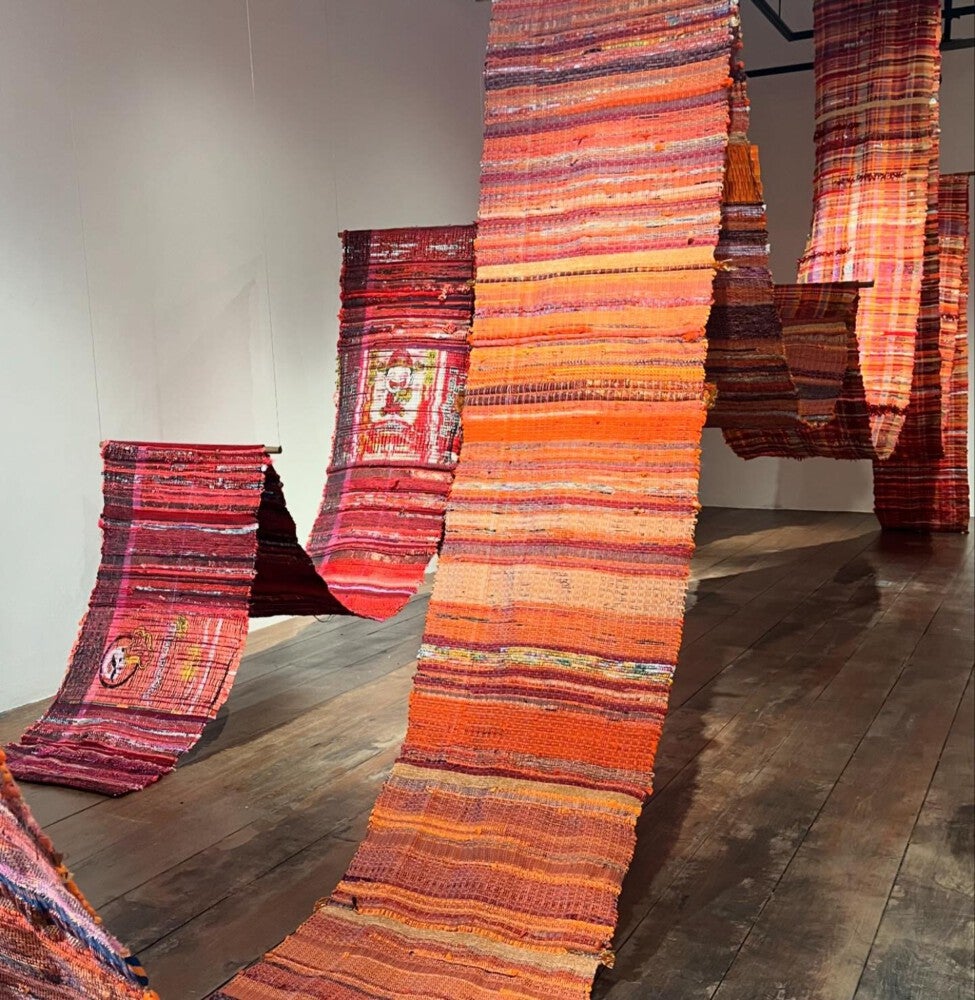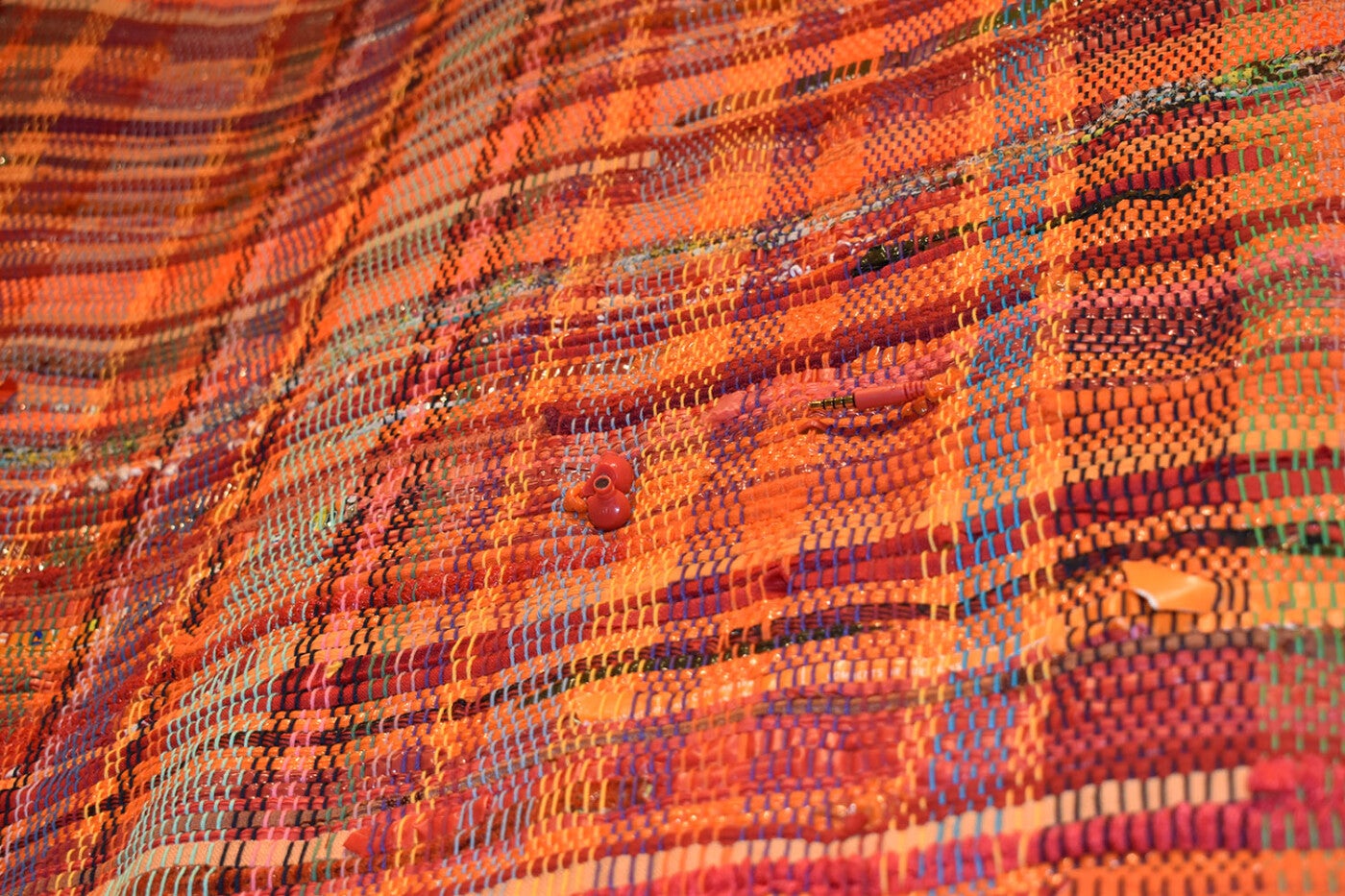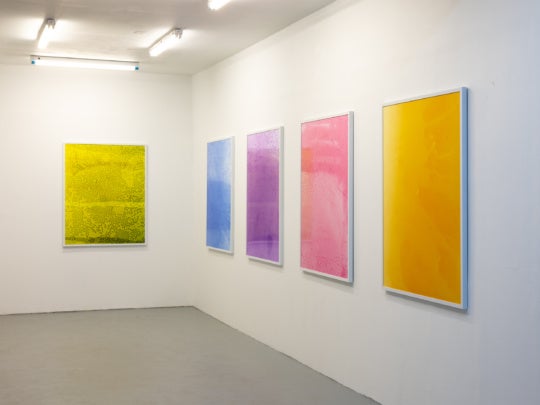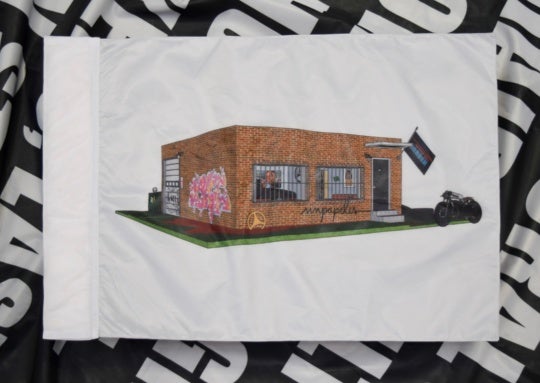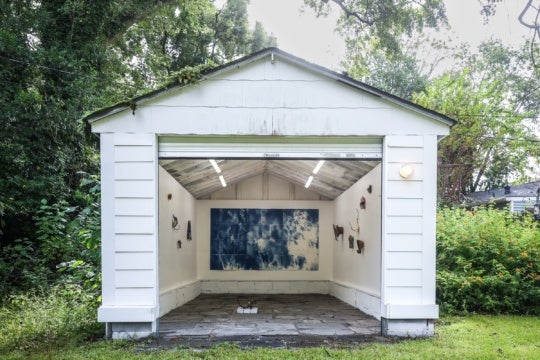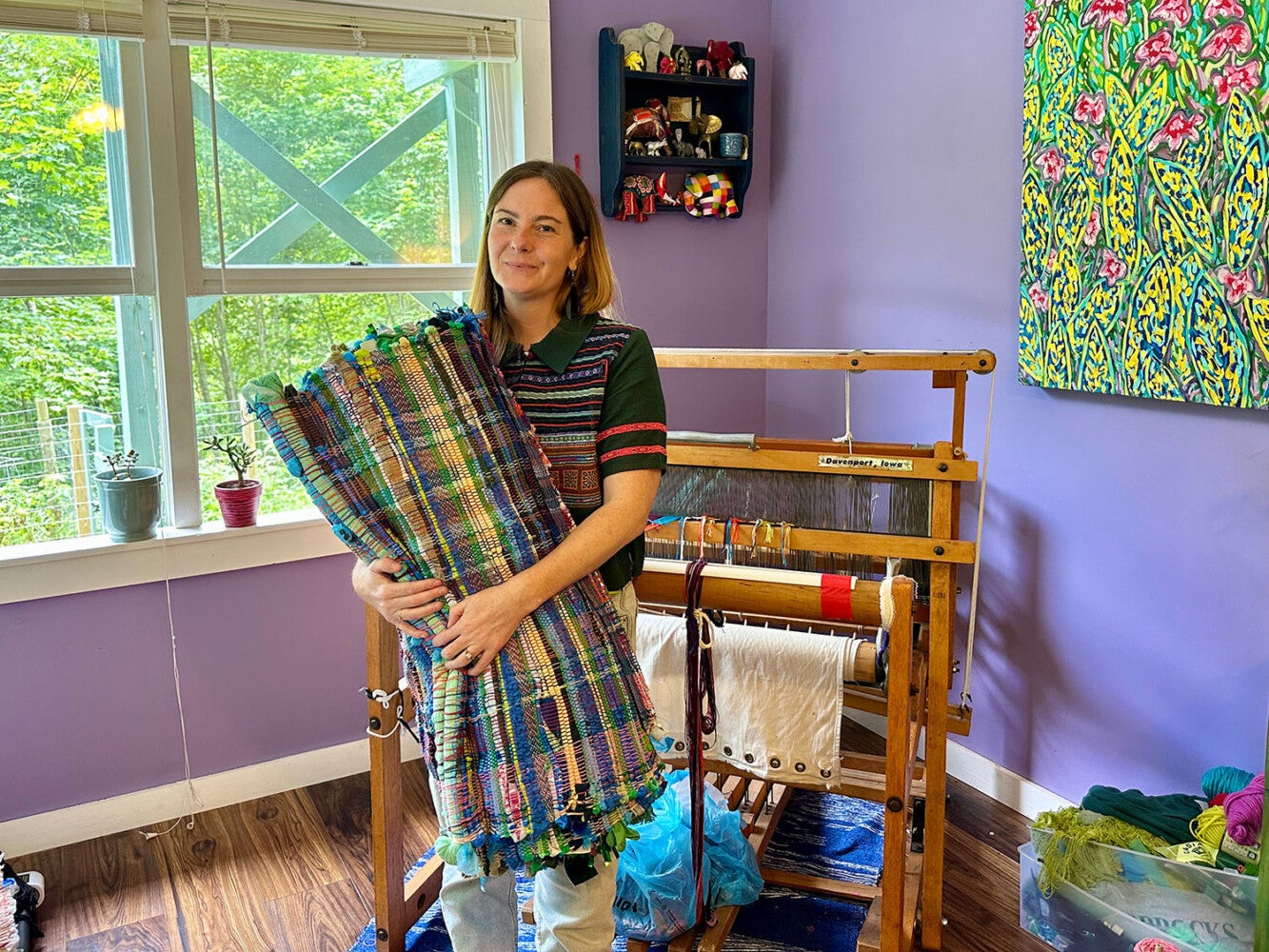
Up a winding dirt road in Zionville, North Carolina, Kelsey Merreck Wagner’s home studio holds treasures from her travels in Southeast Asia, her looms, and her yarn. Her trash? Organized by color in bags stored in back bedrooms.
Wagner’s primary weaving materials include discarded plastic bags, used candy wrappers, phone cords, and more. Her works, which the artist lovingly refers to as “trash weavings,” are rolled up like sleeping bags, her floor loom stands half-warped, and the smells and sounds of our peaceful High Country summer drift in through open windows as she and I speak about collecting trash as social practice art, her turn to weaving, and art’s role in alternative futurisms.
The following conversation was edited for length and publication.
Samantha Oleschuk: The first time I encountered your work in person, you carried five of your 45-foot trash weavings in bags on your shoulders into Appalachian State University’s Looking Glass Gallery. That image is indelible to me–the sight of you carrying their weight, dropping them on the ground and then unleashing them flat onto the hardwood floor. You recently exhibited those five pieces in Bangkok, Thailand, at Warin Lab Contemporary. Can you talk about transporting your work–this repurposed trash–across the world?
Kelsey Merreck Wagner: Yes! How cool to be an icon of trash collection! Carrying them across the country was interesting because I collected a lot of the trash in Thailand during my PhD fieldwork doing community engagement and trash cleanup. I then had to get it all through customs and TSA coming back across continents only to make art with it and travel back with it again. I was able to see this recreation of globalization where trash and all these things we buy are in these big circular economies of market exchange, and I was doing the reverse.
It was very nerve-wracking. I had bought AirTags to go into the bags because I had to check them, and I was terrified I would look out the plane and see it all falling out of the sky or rolling across the tarmac. They made it there safely, but getting them off of the luggage carousel felt like this performance piece where I was once again lugging the trash weavings in those same bags that you saw them in.
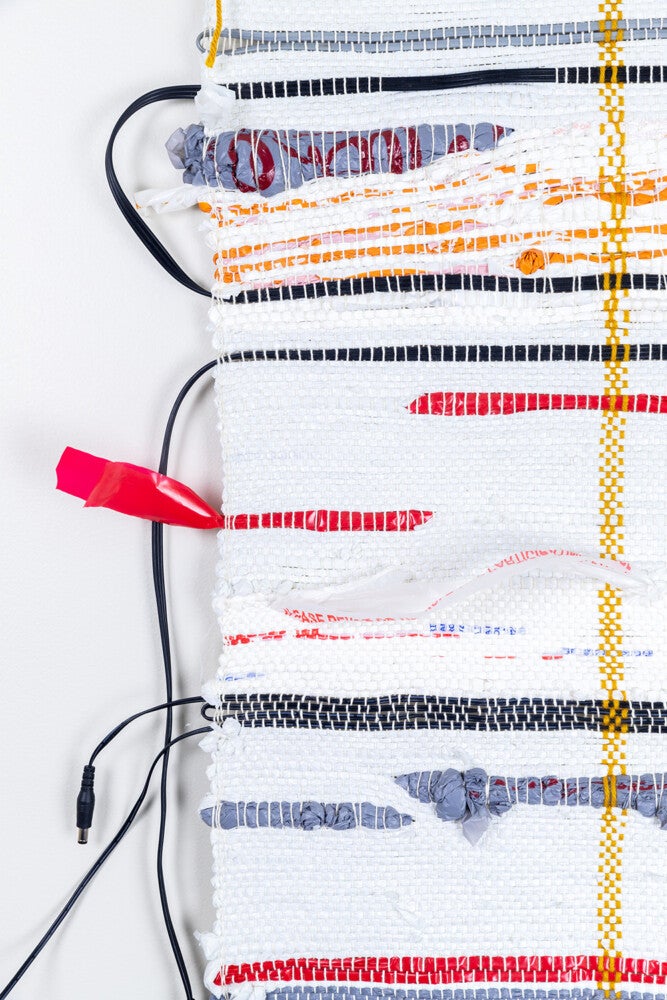
SO: How do you collect your recycled materials for weaving?
KMW: Collecting trash has always had this important meaning to me, so during COVID, when all of the art supply stores were closed (including local fibers shops), and I didn’t want to spend money on Amazon buying random yarn, I started thinking, What do I have on hand that I can weave with? At this point, my artwork had been environmental and trash-related for many years, but I hadn’t woven with it. As an experiment, I wove with plastic bags that I had, and I realized I really liked the look of it, so I started collecting more from my own household. As it grew, I started to ask my parents and some of my best friends. And from there, it kept getting bigger and bigger over the course of almost five years now.
Where it was originally just my immediate circle, it grew into something where I was posting on local Facebook groups, sending out email blasts to people in my community, and organizing different trash clean-ups in the U.S. and Thailand. So I was collecting all these materials and thinking of all the different things we use in our lives. There’s almost nothing I can’t weave with, which is kind of a fun challenge now. It turned into, Well, if I can weave with plastic bags, surely I can weave with wires or cables or old clothing.
Part of it has become this interesting ethnographic project because I get to talk to people about their trash as they give it to me. It’s always this way of having a conversation about what we buy, what we use, and what our relationships are to recycling, plastic, and trash and waste management. I hope it’s been eye-opening not just to me but to other people who are essentially doing plastic audits at their house as they collect these different things for me. They realize that it’s not just the grocery bags from the store and whether you use a reusable bag; it’s the things that our food, haircare, clothing–everything–is wrapped in. Suddenly when you’re collecting it for someone, you realize there’s this mountain of trash.
That has been fun for me because, as much as I love the weaving process and how special and exciting it is to exhibit to help raise awareness and draw attention to this issue, it’s this process involved in it that makes it just as fun and important beforehand.
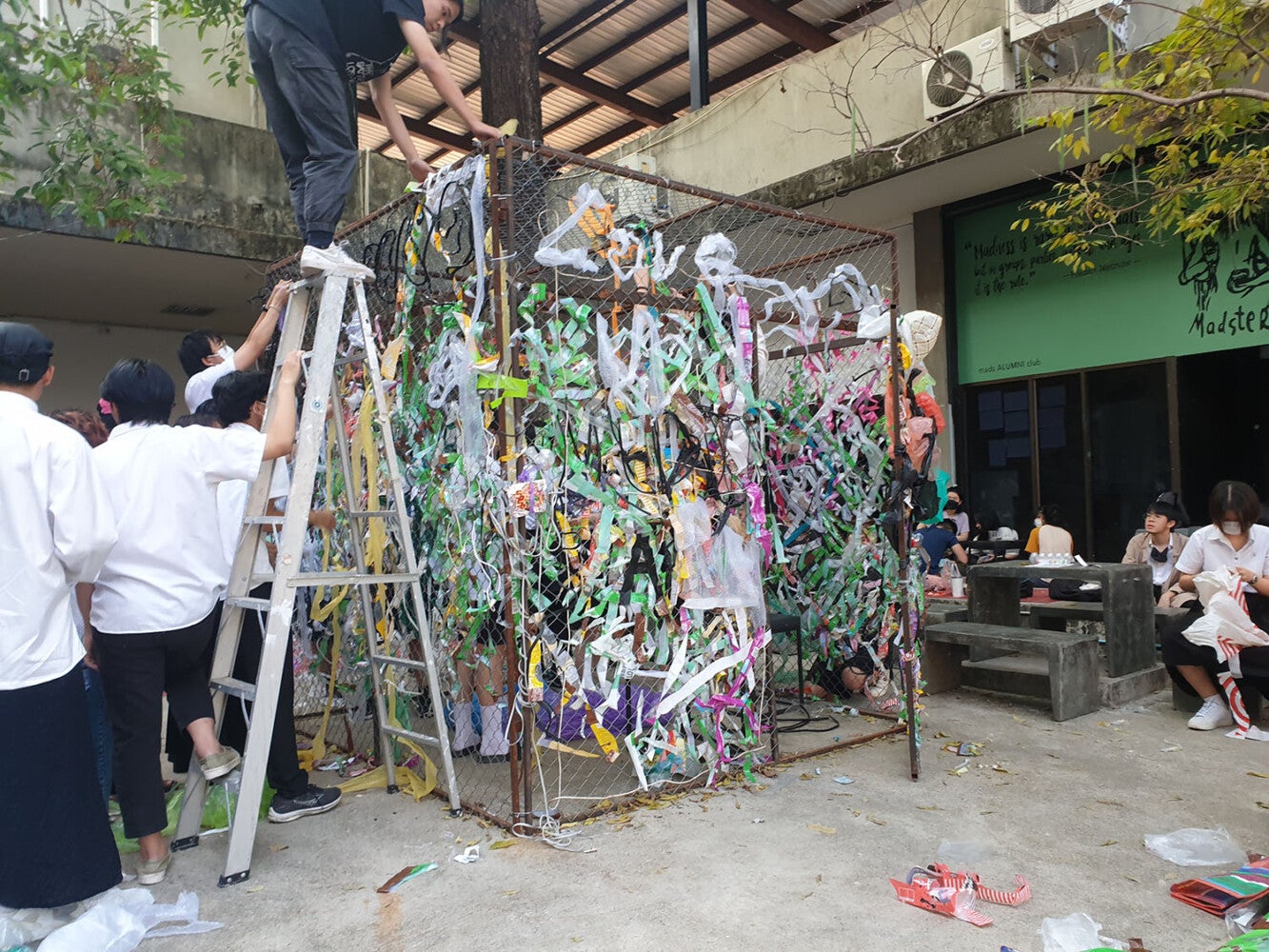
SO: Your work often explores human-environment relationships, the power of sustainability, and the impact of climate change. How do you hope your art influences viewers’ perspectives on these issues?
KMW: One thing with sustainability is that reimagining or re-envisioning our futures requires creativity from every single field. Addressing climate change, endangered species, biodiversity loss, or plastic pollution means coming up with entirely different solutions. The only way to do that is by people coming together and talking through things and thinking about how things can be different.
I feel like, on a smaller scale, art is a way of doing that. I am hoping that the plastic is overwhelming when you look at it and see how much trash it really is. Those 45-foot weavings–all five of them–are a drop in the bucket of an hour of how much trash is produced in a day. I hope that the weavings are aesthetically pleasing, but I also hope they’re disgusting and gross. When you walk up to it, I hope you recognize all the Reese’s wrappers, look at all the trash bags, and start thinking about how we’re going to live in a different world because right now, we are drowning in plastic, and it’s only going to get worse.
